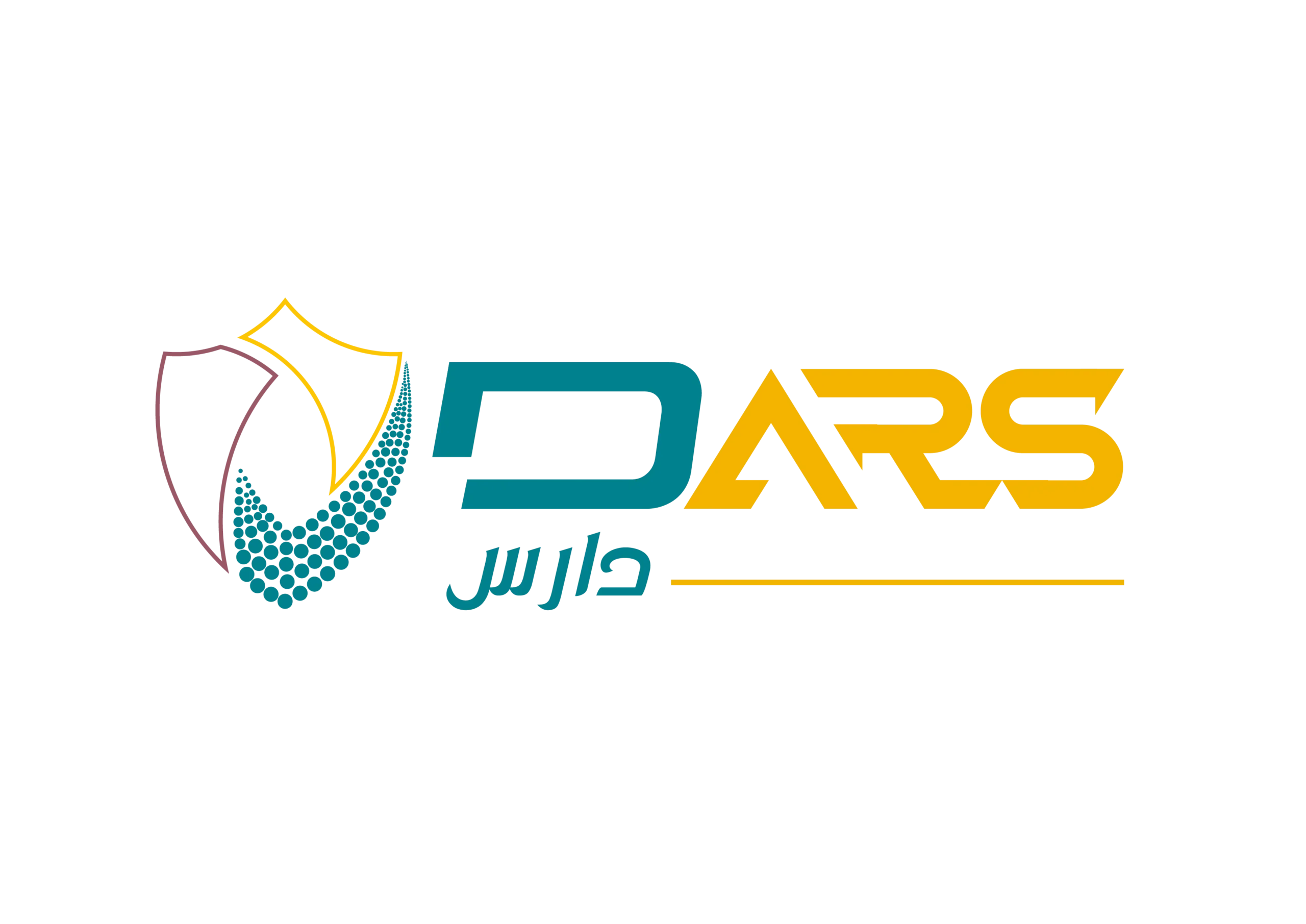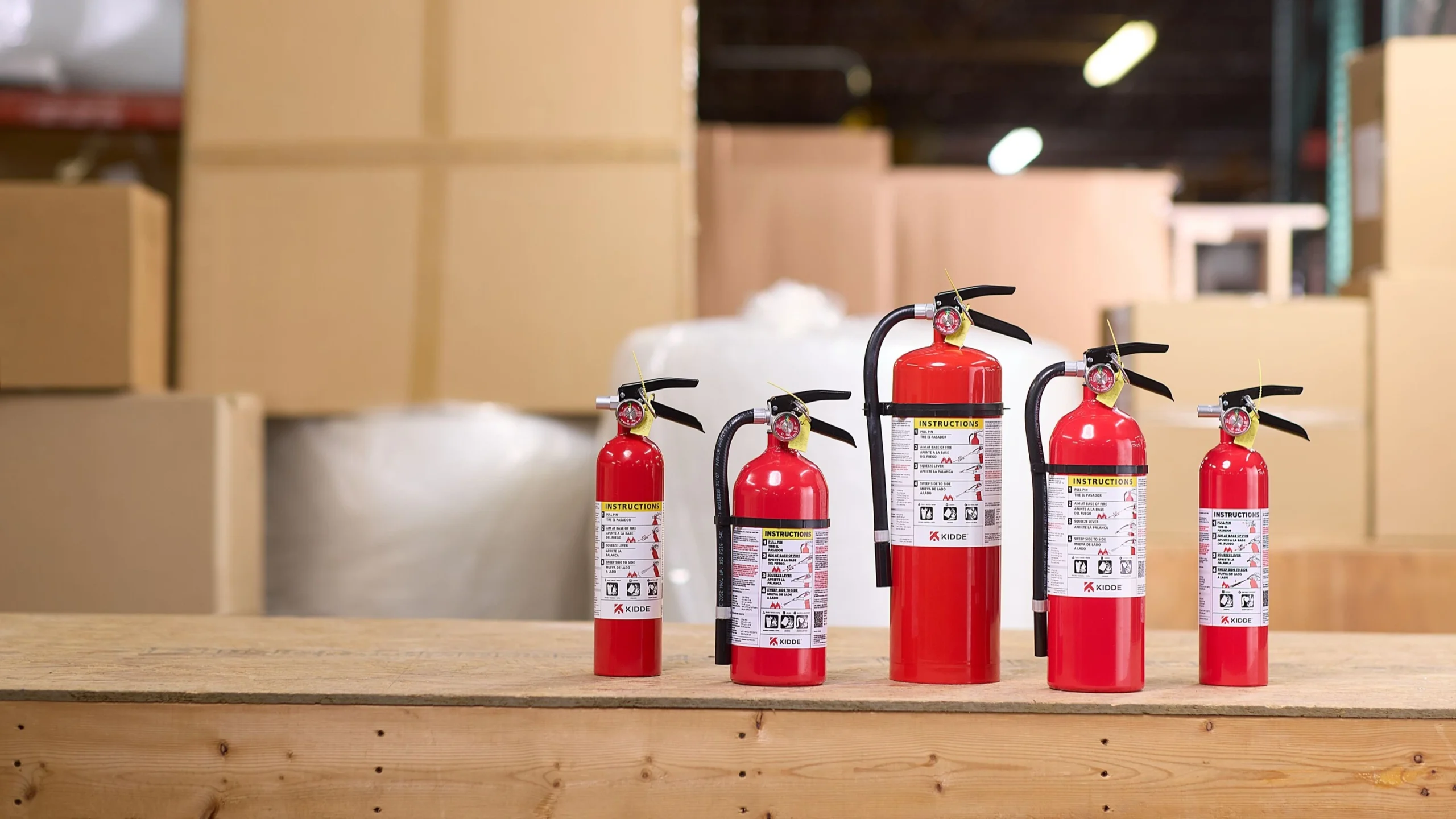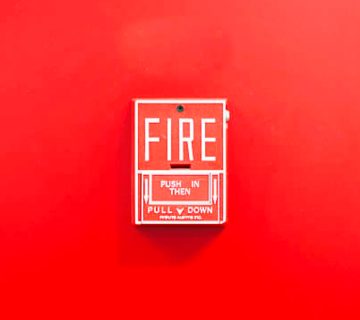What is a Fire Extinguisher and Why It Matters
A fire extinguisher is one of the most widely recognized safety devices across the world. Compact, visible, and instantly accessible, it serves as the first line of defense against small fires before they escalate into major emergencies. In Saudi Arabia, where commercial developments, industrial hubs, and residential areas continue to expand, the presence of reliable fire protection systems has become essential.
Beyond being a piece of equipment mounted on a wall, a fire extinguisher represents an investment in fire extinguisher safety, compliance with national regulations, and protection of lives and assets. The Saudi Civil Defense, working closely with the Saudi Building Code and international benchmarks like NFPA standards, mandates strict requirements for installation, inspection, and maintenance. Companies such as DarAlhmaya align with these frameworks to ensure that every fire extinguisher deployed in the Kingdom is more than just a tool it is a life-saving guarantee.
As industries and households alike navigate questions around the right fire extinguisher types, placement, and training, this article breaks down everything needed to make informed decisions.
What Are the Different Types of Fire Extinguishers and Their Uses?
Water Extinguishers (Class A Fires)
Water extinguishers remain the most traditional option, designed to fight Class A fires involving combustible materials such as wood, paper, and textiles. They operate by cooling the burning material and cutting off heat, one of the three essential elements in the fire triangle. These extinguishers, however, should never be used on electrical or oil-based fires, as they can worsen the situation.
Foam Extinguishers (Class A, B, and K Fires)
Foam extinguishers are versatile, making them highly effective in commercial kitchens and areas where flammable liquids may pose a risk. They smother the flames by forming a barrier that cuts off oxygen, while simultaneously cooling the affected material. In Saudi Arabia, where cooking oil and chemical-based hazards are common, foam extinguishers are especially valuable.
Carbon Dioxide (CO₂) Extinguishers (Class B and C Fires)
CO₂ extinguishers are vital for spaces with extensive electrical systems, including offices, IT rooms, and industrial control centers. They work by displacing oxygen around the fire, effectively suffocating the flames without leaving residue that could damage sensitive equipment. Businesses seeking eco-friendly suppression also favor CO₂ because it leaves no trace once discharged.
Dry Chemical Powder Extinguishers (Multi-purpose, Class A, B, C Fires)
Perhaps the most widely used option, dry chemical powder extinguishers provide versatility across multiple fire classes. They break the chain reaction of combustion, making them reliable for both residential and industrial applications. From offices to warehouses, they are often the first choice for organizations prioritizing flexibility in fire protection.
Wet Chemical Extinguishers (Class K Fires)
Designed for commercial kitchens, wet chemical extinguishers address fires fueled by cooking oils and fats. They cool the flames while forming a soap-like layer that prevents re-ignition. In Saudi Arabia’s expanding hospitality sector, this extinguisher type is increasingly in demand due to strict food service safety regulations.
Special Types: Class D Extinguishers for Metal Fires
Industries dealing with magnesium, sodium, or other flammable metals require Class D extinguishers. These are highly specialized and tailored for factories, labs, and chemical facilities. While rare in general settings, they are mandatory for high-risk industrial zones under Saudi Civil Defense regulations.
How to Choose the Right Fire Extinguisher for Your Property
Selecting the right extinguisher is not about convenience alone; it requires a careful risk assessment. In Saudi Arabia, regulations dictate not only the type but also the number and placement of extinguishers within a building.
Assessing Fire Risks by Building Type
A residential villa has a very different fire risk profile compared to an oil refinery or a shopping mall. Understanding the sources of potential ignition whether electrical wiring, industrial chemicals, or cooking oils is the first step.
Understanding Fire Classes and Matching Extinguishers
Every fire extinguisher is designed for a particular class of fire. Failing to match them properly can render the equipment useless, or even dangerous. For example, a portable fire extinguisher filled with water will be hazardous if used on an electrical blaze.
Importance of Certified Products
Saudi Civil Defense requires certified extinguishers that meet both local and international fire extinguisher standards. Partnering with licensed providers like DarAlhmaya ensures that every device installed is tested, reliable, and backed by compliance documentation.
Placement Strategies for Maximum Accessibility
It is not enough to buy the correct type of extinguisher; its location matters just as much. Extinguishers should be mounted visibly, near exits, and within reach of potential fire sources. According to Saudi Civil Defense, accessibility can determine whether a fire is controlled in seconds or grows into a full-blown emergency.
What Are the Legal and Regulatory Requirements for Fire Extinguishers in Saudi Arabia?
Fire safety is not optional it is legally enforced. Organizations in Saudi Arabia are bound by regulations that dictate fire extinguisher purchase, installation, inspection, and maintenance.
Saudi Civil Defense Rules
The Civil Defense requires every building to be equipped with the appropriate number and type of extinguishers. They must be strategically positioned and labeled for ease of access. Special attention is given to industries handling chemicals or flammable liquids, where enhanced fire protection measures are mandated.
Compliance with Building Code and NFPA Guidelines
Saudi Arabia’s Building Code integrates international best practices, particularly the standards issued by the National Fire Protection Association. This alignment ensures that buildings across the Kingdom adhere to globally recognized fire safety benchmarks.
Inspection, Certification, and Record-Keeping
Routine fire extinguisher inspection is legally required. Records of these inspections must be maintained and presented during audits. Failure to comply can result in heavy penalties, closure orders, or even legal liability in the event of an incident.
Staff Training and Fire Drills
Possessing equipment is only part of compliance. Staff must be trained to operate extinguishers effectively. Regular drills, documented training sessions, and safety workshops are mandatory across schools, businesses, and factories.
Fire Extinguishers in Saudi Arabia: Inspection, Maintenance, and Safe Usage
How Should Fire Extinguishers Be Inspected and Maintained?
While owning a fire extinguisher is essential, its effectiveness depends entirely on whether it functions properly when needed. In Saudi Arabia, regulations place significant emphasis on ongoing fire extinguisher maintenance. This is because an extinguisher that appears fine externally may fail during a crisis if not regularly serviced.
Monthly inspections are the starting point of this process. These quick checks involve ensuring the device is visible, accessible, and has not been tampered with. The pressure gauge must be within the green zone, the pin should be intact, and the instructions must remain clear. Although simple, this routine ensures that extinguishers are ready to be deployed at any moment.
Beyond the visual checks, annual servicing by certified professionals is legally required. During servicing, technicians examine the internal components, replace seals, and confirm the extinguisher is free of leaks or corrosion. Many businesses in the Kingdom engage approved fire extinguisher services to handle these annual evaluations, safeguarding both compliance and operational readiness.
Another key requirement is hydrostatic testing. Depending on the extinguisher type, this may be needed every five or twelve years. The test subjects the cylinder to high pressure to verify its structural integrity. If the cylinder fails, it must be removed from service immediately. In industries where extinguishers are exposed to extreme temperatures, such testing is particularly critical.
When an extinguisher has been used, even partially, it must be recharged or replaced right away. A discharged unit, no matter how small the release, cannot be relied upon again until fully restored. This principle highlights the importance of keeping a detailed record of inspections and servicing, ensuring accountability and transparency across all properties.
How to Properly Use a Fire Extinguisher
Even the most advanced extinguisher is useless without proper knowledge of how to operate it. Across Saudi workplaces, staff training remains one of the most crucial aspects of fire extinguisher safety. The universally recognized technique for using extinguishers is known as the P.A.S.S. method: Pull, Aim, Squeeze, and Sweep.
To begin, the user must pull the safety pin located near the handle. This unlocks the operating lever and allows the extinguisher to discharge. Next, they should aim the nozzle at the base of the fire, not the flames themselves. Fires feed on their source, and directing the extinguishing agent at the wrong spot reduces effectiveness. The third step is to squeeze the handle, releasing the extinguishing agent in a controlled stream. Finally, the user must sweep the nozzle from side to side until the fire is fully suppressed.
While the technique may sound straightforward, panic can easily overwhelm untrained individuals. This is why fire extinguisher training is emphasized by Civil Defense authorities. Practical drills, hands-on demonstrations, and regular refreshers help employees respond instinctively during emergencies.
It is equally important to understand when not to use an extinguisher. If a fire grows beyond a small, contained size, or if toxic smoke is filling the area, evacuation should take priority over firefighting. Using an extinguisher without protective gear in such conditions can place individuals at serious risk. This balance between quick response and personal safety is a vital part of fire protection education in Saudi Arabia.
Common Challenges and Best Practices in Saudi Arabia
Despite clear regulations, implementing fire safety systems across the Kingdom comes with challenges. One recurring issue is inconsistency in compliance across diverse building types. For example, luxury shopping malls often invest heavily in advanced fire safety systems, while smaller businesses may delay inspections due to cost concerns. This uneven adherence places occupants at risk and undermines the purpose of standardized codes.
Another challenge lies in awareness and training. Many employees in factories, schools, and offices have extinguishers nearby but lack the confidence to use them effectively. Without repeated training sessions, staff tend to forget the details of operation or hesitate during emergencies. Organizations must prioritize continuous education, recognizing it as an investment rather than an expense.
Managing the lifespan of extinguishers is also a pressing concern. Devices degrade over time due to exposure, misuse, or neglect. Some owners mistakenly assume that a newly purchased extinguisher will last indefinitely, failing to account for recharging needs and eventual replacement. Adopting a proactive schedule, backed by fire extinguisher inspection records, is the only way to avoid unpleasant surprises.
Best practices in Saudi Arabia increasingly involve integrating extinguishers into broader safety systems. Buildings equipped with alarms, sprinklers, and suppression systems provide multiple layers of defense. In such environments, extinguishers serve as immediate, human-operated tools that complement automated responses. This holistic approach ensures that no single device carries the entire burden of fire suppression.
The Role of Technology in Enhancing Safety
Technology is reshaping the way extinguishers are monitored and maintained. Smart extinguishers, equipped with sensors and digital connectivity, are gaining ground in advanced sectors. These devices alert facility managers when maintenance is due or when pressure levels fall below the safe threshold. In a country like Saudi Arabia, where large facilities require hundreds of extinguishers, this technology reduces the risk of oversight and streamlines compliance.
Furthermore, eco-friendly extinguishing agents are being developed to replace traditional chemicals that may pose environmental concerns. Non-toxic and sustainable solutions are particularly appealing to industries seeking to balance operational safety with environmental responsibility.
DarAlhmaya continues to stay at the forefront of these developments, ensuring its clients are not only compliant but also future-ready. By offering advanced fire extinguisher services alongside conventional models, the company supports the Kingdom’s commitment to Vision 2030 and its emphasis on sustainable growth.
Fire Extinguishers in Saudi Arabia: Innovations, Trends, and Long-Term Safety
What Are the Latest Innovations in Fire Extinguishers?
Fire extinguishers have come a long way from the traditional red cylinders that many people picture. Recent innovations are reshaping the way industries and households approach fire protection. One of the most significant developments is the rise of eco-friendly extinguishing agents. Unlike older chemicals, these agents minimize environmental harm and reduce toxic residue, making them safer for both people and property.
Smart technology is also redefining maintenance. Extinguishers equipped with sensors can now transmit real-time data on pressure, tampering, and expiry dates. For large facilities in Saudi Arabia that manage hundreds of units, these devices cut down on human error by automating monitoring and ensuring timely service. Some models even integrate with central fire alarm systems, adding another layer of security.
Another trend is the creation of tailored extinguishers for specific industries. In petrochemical plants, specialized agents are being developed to tackle high-risk flammable liquids. In healthcare, non-contaminating extinguishers are used to protect sensitive medical equipment. These innovations demonstrate how the field is moving away from one-size-fits-all solutions toward customized fire protection strategies.
How Fire Extinguishers Fit into Saudi Arabia’s Long-Term Safety Vision
Saudi Arabia’s commitment to Vision 2030 places strong emphasis on infrastructure resilience, safety, and sustainability. Fire protection plays a central role in achieving these goals, particularly in the industrial and commercial sectors driving economic diversification. By enforcing strict fire extinguisher standards, authorities are ensuring that every business contributes to a safer national environment.
DarAlhmaya has positioned itself at the heart of this transformation by providing certified products, professional fire extinguisher installation, and reliable after-sales support. Its role is not limited to equipment supply it also involves raising awareness, conducting training sessions, and guiding organizations through regulatory compliance. This holistic model is precisely what Vision 2030 envisions: safety embedded in daily life, not treated as an afterthought.
Moreover, the push toward sustainability aligns with eco-friendly extinguishers, which reduce greenhouse gas emissions and minimize chemical hazards. In the long run, the combination of modern technology and environmental responsibility ensures that fire safety systems in Saudi Arabia are both effective and future-ready.
Building a Culture of Fire Safety
The presence of extinguishers on walls is not enough to guarantee protection. What truly defines success is the development of a fire safety culture within communities and organizations. This culture requires employees, residents, and management to treat extinguishers as essential tools rather than neglected fixtures.
Continuous fire extinguisher training ensures that people know how to respond instinctively in emergencies. Just as importantly, routine fire extinguisher inspection and maintenance foster confidence in the equipment. When individuals trust that the tools available will work, they are more likely to act decisively.
Saudi Arabia’s Civil Defense authorities repeatedly stress that safety is a shared responsibility. Property owners must invest in compliance, businesses must invest in training, and individuals must remain vigilant. Together, these efforts reduce fire risks across residential, commercial, and industrial landscapes.
Conclusion
Fire extinguishers may appear simple, but they are powerful symbols of preparedness and responsibility. From understanding the different fire extinguisher types to ensuring regular maintenance and adopting smart technology, the journey of fire safety in Saudi Arabia continues to evolve. Compliance with national laws, supported by global best practices like NFPA guidelines, strengthens the resilience of businesses, homes, and public spaces.
For organizations across the Kingdom, the responsibility does not end with purchase. Ongoing training, inspections, and professional servicing are essential to guarantee readiness. Innovations such as eco-friendly agents and smart monitoring promise even greater efficiency, aligning perfectly with Saudi Arabia’s Vision 2030 objectives.
DarAlhmaya remains committed to guiding clients through every stage of this process selection, installation, certification, and training. By combining regulatory knowledge with practical expertise, the company ensures that its clients are always prepared, always compliant, and always protected.
When properly installed, regularly inspected, and confidently used, fire extinguishers save lives. They represent more than compliance; they represent care for people, for property, and for the future of Saudi Arabia.
fire extinguisher safety guide for Saudi Arabia types, uses, and maintenance tips to protect lives, property, and ensure compliance.


